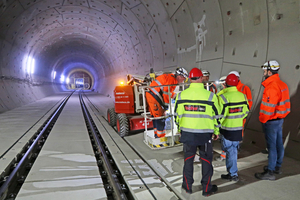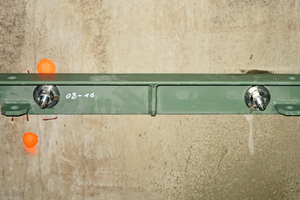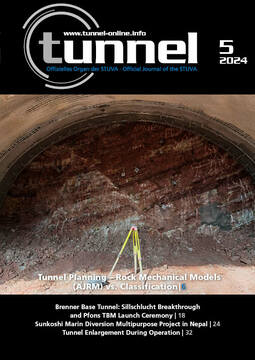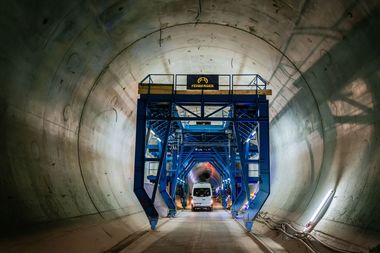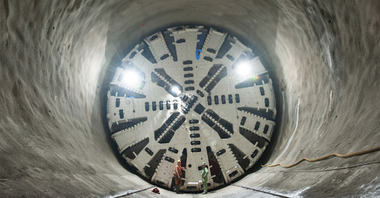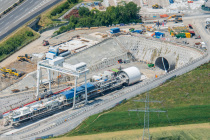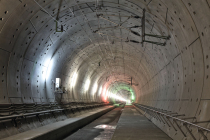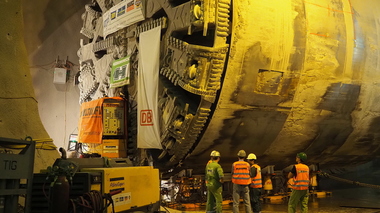New System Solution for Overhead Line Installation in the Filder Tunnel
Upon completion, the Filder Tunnel will connect Stuttgart’s Central Station to the Filder Plain via the new high-speed line between Stuttgart and Ulm. The tunnel will ascend around 153 metres. At approximately 9.5 kilometres, the Filder Tunnel, which is being being built as part of the Stuttgart 21 project, will be the longest twin-tube railway tunnel and the third-longest tunnel in Germany. The project is being developed by DB InfraGo AG (formerly known as DB Netz AG). SPL Powerlines Germany GmbH (Forchheim), part of the Powerlines Group with decades of experience in railway electrification, was commissioned to plan and carry out the installation of the overhead wires.
To fasten steel and aluminium fixtures to install the overhead wires in the Filder Tunnel, the fixing expert Fischer developed a system solution. FHB II-PF resin capsules and the FIS HB 360 S Highbond special mortar permanently and securely anchor the fixtures in the reinforced concrete segments together with the FHB II-A S Highbond anchor rods and Fischer’s filling set for dynamic loads. System components by Fischer were used in stainless steel (R) versions in sizes M24 x 170/50 R (640 pc.), M20 x 170/50 R (1532 pc.) and M16 x 95/60 R (4180 pc.)
“We especially included the 100-year service life of our chemical fixing system and fastenings in diamond-drilled holes in the European Technical Assessment (ETA) for this project. With its extremely fast curing time, our injection system is ideal for installations in tunnel ceilings and walls. The system solution is also suitable for dynamic action through rail traffic while taking into account stand-off installation due to the tunnel’s curvature”, explains Reinhold Pfaff, a Developer in Fischer’s Chemical Business Unit, who was closely involved in the project. “This met all the fastening requirements of project owner and client”.
Prof. Dr.-Ing. Jan Hofmann, Dean of the Faculty of Civil and Environmental Engineering, Professor of Fastening Technology and Strengthening Methods at the Institute of Construction Materials and Deputy Director of the Materials Testing Institute of the University of Stuttgart, verified the dynamic suitability. Technical calculations for the overall suitability were provided by the Internal Technical Advice department at the German distributorship of the Fischer Group of Companies. Fischer’s Chemical Business Unit made the construction project possible through tests, technical preparations and coordinating with the surveyor.

